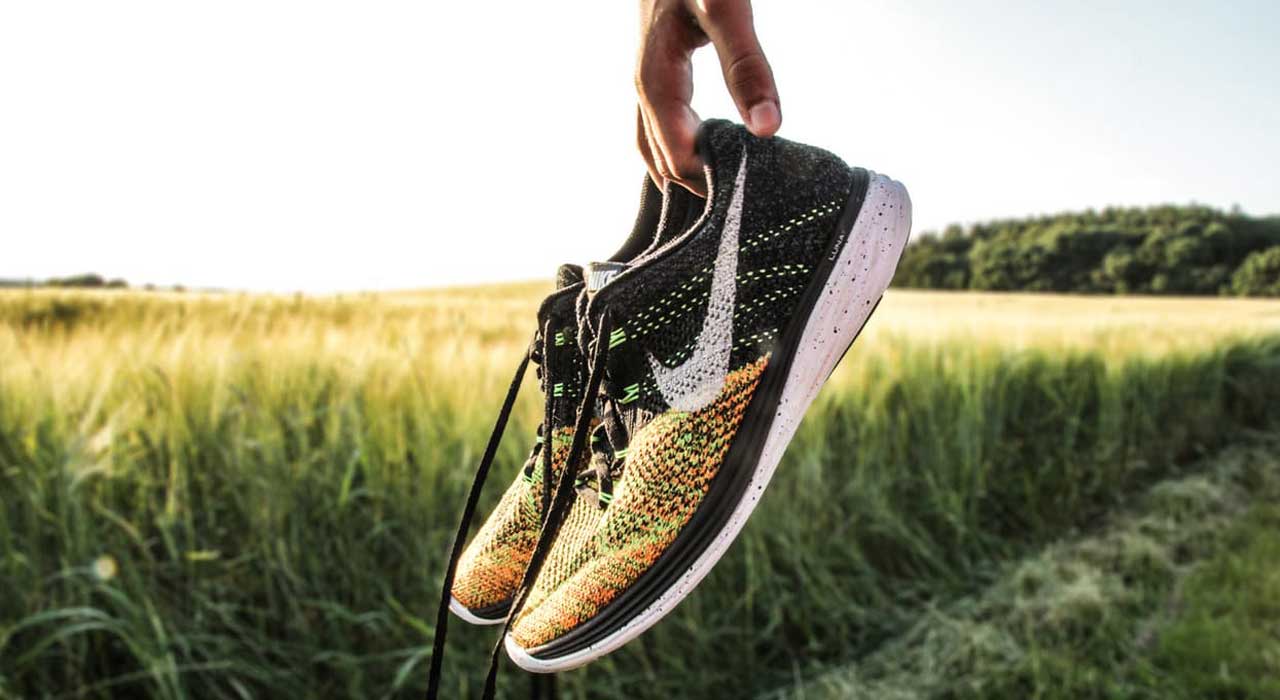Barefoot running shoes have made tremendous strides in the running community but they could also see your weights-room gains taking a giant step forward.
Minimalist and barefoot running shoes are adding a new fashion flavor to the weights room, one that’s peppered with improved performance. Here’s why they’re proving to be a step ahead of the competition.
Are your running shoes a lie?
Despite the likes of Nike, Asics and Adidas having oil well-like money, scientific labs and millions of sample runners, they’ve never been able to claim their cushioned shoes reduce sports injuries.
In fact, quite the opposite has been found because traditional running shoes actually have a skeleton in their closet. Cushioned shoes can put more stress on your knees, hips and ankles compared to running barefoot and even wearing high heels, found research in PM&R: The journal of injury, function and rehabilitation.
Whether you’re a weekend warrior or a pro athlete it seems people everywhere have all been favoring heavily cushioned footwear; and these pillow-like running shoes are still the dominant shoe type in most gyms.
But all this pomp and comfort could be stealing the gains from your hard slog in the weights room because training without the cushioned soles will make you work harder and smarter.
Grounding your gains
Absorbable running shoes make sense when you’re pounding pavements during a marathon, but in the gym, force absorbed by foam is force lost to your muscles.
“The muscles in your feet tell you what to do, and then the muscles in the trunk and the hips basically do the work,” says Jay Dicharry, a physical therapist and director of the SPEED Performance Clinic and the Motion Analysis Lab at the University of Virginia.
“Your feet are the first thing that hits the ground, and if they work, then things simply work well up the chain.”
So having your feet almost touching terra firma tells the rest of your muscles to behave correctly. But what does this mean to the guy who wants to push bigger numbers on the squat or deadlift? Well, everything.
“Feet are crucial in activating the stretch reflex, an involuntary muscular contraction that helps lifters blast out the bottom of squats,” says podiatrist Dr Emily Splichal.
“You get this impact, your body takes this force and it releases it elastically. If your shoe is designed to absorb the shock, you lose that energy transfer. So you are no longer an efficient mover. And if you’re not an efficient mover, you’re now muscling your way through things, and you’re at risk from overuse injuries.”
It seems that being more in touch with the ground will actually help you power out of the difficult parts of your lifts, which runs contrary to the promises of powerlifting shoes.
Taking the next step
Lifters like Arnie were famous for training barefoot, showing just how far ahead of the times they actually were. Even trying to balance on a single leg barefoot elicited significantly higher muscle activity throughout the leg than doing so in shoes, found research in Footwear Science.
“There is a lot of research showing that when you stimulate the bottom of the foot, and the stabilizers fire up, that leads to a faster lumbar-pelvic complex stabilization,” says Splichal. “So athletes feel stronger in their movements, because their base is far more stable.”
Since most gyms are bathed in footwear bureaucracy you probably can’t kick off your kicks anymore, which is where minimalist footwear is great because it provides the thinnest reasonable barrier between your feet and the ground. This strategy will net you several benefits, according to the lab coats. Research published in Footwear Science looked at the effects training in minimalist shoes had in all-out athletic training such as rope skipping, running stairs and jumping.
They found that the participants’ toe flexor muscles were significantly strengthened. An increased strength in the forefoot has been shown elsewhere to improve general athletic performance. So if you’re looking to jump higher and become your team’s MVP then barefoot or minimalist shoes could be the trick you’re after. And if you want to get out the ‘hole’ easier during your squats then these shoes could be the small step you need to take to hit new personal bests.
Bear in mind that making the switch can initially be a little painful for your feet while the muscles and tendons strengthen to this new technique. It’s a learning curve so start off slow with one or two workouts in them each week and gradually phase your running shoes out of your training routine.
You’ll soon be duly rewarded with more muscle and improved balance.
Find training tips and more in every issue of TRAIN magazine.







